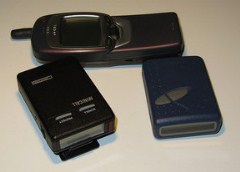Secure self service password reset with two factor authentication
Posted by
Edward Killeen on Wed, May 30, 2012
Emerging technologies are challenging old paradigms and unveiling new ways of approaching the security discipline that enables the right individuals to access the right resources at the right times for the right reasons.
EmpowerID has embedded innovative technologies in every aspect, providing flexible and mature IAM capabilities in the cloud, on premise and in hybrid environments, addressing the mission-critical need across increasingly heterogeneous technology environments, and meeting increasingly rigorous compliance requirements.
The traditional model for self service password reset drives me crazy. The user gets asked questions to prove they are who they say they are. And the system just resets their password. Easy, right? Secure, wrong.
Here is the issue, I can guess most of the answers to your questions by looking at your facebook timeline and the pictures on your cubicle wall. Your first car, your daughter's name, your eye color, and so on. That just isn't as secure as it should be.
 What you need is two factor authentication with your self service password reset. The first factor is the questions, in other words "what you know." The second factor is something you have, whether it's a pager or mobile phone or a keyfob device. With proper two factor authentication, someone is not only going to have to steal your user's memories but their phone also!
What you need is two factor authentication with your self service password reset. The first factor is the questions, in other words "what you know." The second factor is something you have, whether it's a pager or mobile phone or a keyfob device. With proper two factor authentication, someone is not only going to have to steal your user's memories but their phone also!
This still doesn't get you everywhere you need. It is also important to have complexity requirements, either to match or exceed your Active Directory domain policy. My own personal preference, make the complexity pertain to password length rather than crazy characters. It's harder to hack a 72 character sentence than P@ssw0rd. And it's easier to remember the sentence.
Having a proper password synchronization and SSO tool also improves your password security. If users have a dozen passwords to remember they are going to make them easy to hack. They are going to forget them a lot and use easy to hack questions. Make life easier on your users and your security will increase...counter intuitive but true.
Get a second factor in your self-service password reset, it's easy and secure for your users. Click below for a demonstration of how simple this can be.
EmpowerID is the all-in-one Identity Management and Cloud Security platform designed for people. Globally managing millions of identities in diverse enterprises, EmpowerID offers comprehensive provisioning, single sign-on and access governance coupled with an industry leading user experience.
Built on a single codebase for manageability and scalability, EmpowerID ships with a powerful API, a visual workflow designer and over 400 ready-to-use workflows for rapid deployment.